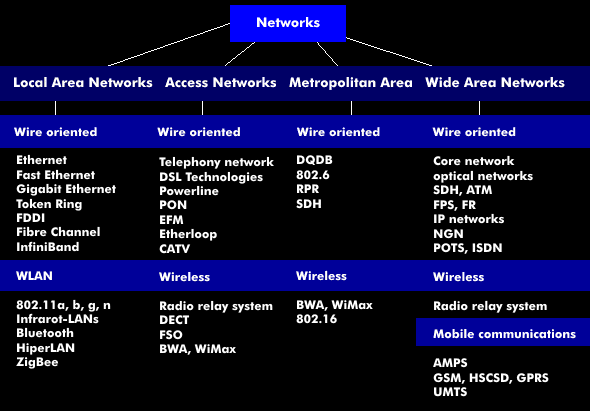network
A network generally consists of a group of computer systems, switching equipment and terminal devices that are interconnected via common communication lines or radio links, exchange information and share resources.
A network includes technical facilities such as routes, exchanges and connection points and corresponding transmission and switching technologies. Depending on their extent, networks are referred to as local area networks( LAN) or wide area networks(WAN). In the case of local networks, the end devices and network nodes are located in a manageable geographical area: a campus, industrial site, industrial hall or office space. In contrast, wide-area networks are regional, transregional, national and international in scope. They are interconnected by cables, radio links, dial-up lines or leased lines. Networks are multi- user and multi-functional systems through which consumers can use services and share resources. Therefore, a further distinction is made between networks for specific services such as computer networks and telephone networks. One speaks of public networks if the data transmission takes place via public lines, e.g. via dial-up lines and/or data packet switching, and telecommunication services are offered.
In addition to the two network structures mentioned, LAN and WAN, there are various others such as access networks( AN), municipal networks( MAN), mobile networks and the Internet, which is based on the Internet Protocol( IP).
Networking is responsible for the conception of a network, its planning, construction, use, administration and maintenance. Depending on the conception and application, a network can consist of a few terminals and nodes, but also, as can be seen in the example of the Internet, of many millions of subscribers who can communicate with each other and retrieve their services.
Networks can be structured in different ways, they can be wired and wireless. The wired ones transmit the signals through electrical lines or, in the case of optical networks, through optical fibers. The wireless transmission works with radio networks. The structure of a network is called the topology of the network. In classical structures, a distinction is made between bus topology, star topology, ring topology, and so on. In addition, meshed structures are used in wide-area networks.
The advantages of networks include their flexible exchange of data and programs, economical use of expensive peripheral equipment, effective information retrieval and distribution and, last but not least, scalability and expandability.

